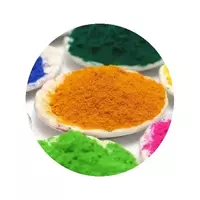Food coloring agent

Quite often we wonder: "What attracts us to food in the first place? " Undoubtedly, the taste of food comes first, but the appearance of the finished dish is also important. In the current manufacturing process of many products, food dyes are added. Of course, products acquire a more attractive, appetizing and marketable appearance, but what about their benefits? Let's look deeper, so to speak, into the composition of the food dye.
Composition of food coloring agent
In general, food dyes are divided into natural and synthetic - almost anyone who is fond of cooking knows about this. Natural food dyes are usually isolated from natural sources, that is, from fruits and vegetables. As a rule, they do not have toxicity, however, for some, the permissible daily consumption rates are even established, but this is quite rare.
Carrots, lemon zest or saffron are usually used to produce a yellow natural food dye. Green paint is obtained from leaf spinach. As for the brown color, which is formed naturally when roasting products due to the caramelization of the substances included in their composition, in the case when this type of heat treatment is not used, a strong infusion of tea or coffee, as well as burnt sugar, can be used. All shades of red are easily and simply obtained from berries and fruits of the same color, and also from beets. Tangerine or orange zest gives orange color to products. If you want a chocolate color, use cocoa powder or, in fact, chocolate. All shades of blue, in principle, can be obtained, but regarding its application to food, this is not an idea of the best. But if you really want, the juice of blueberries, blackberries, red cabbage or purple grape varieties will come to the rescue.
The composition of a food coloring agent which is produced chemically is complex and not always known to the consumer. It should be noted that synthetic dyes have significant advantages when compared with most natural additives. So, they dissolve well in water and at the same time give more recognizable and saturated colors. However, synthetic food dyes cannot be called harmless, since they have varying degrees of toxicity. In addition, compared to natural analogues, they do not carry either biological activity or energy value.
Damage to food coloring agent
As for the possible harm of the food dye, in the case of a natural representative, we can only talk about the individual hostility of the original product, from which this bright additive is obtained. And when using a synthetic version, there may be a possibility of not only allergies, but also the likely occurrence of all kinds of tumors. All this has not yet been scientifically proven one hundred percent, but it is better to insure yourself and use artificial food dyes rarely and within reasonable limits.
food dye 0.01 kCal
Energy value of food dye (Ratio of proteins, fats, carbohydrates - ju):
Proteins: 0.01 g (~ 0 kCal)
Fats: 0 g (~ 0 kCal)
Carbohydrates: 0 g (~ 0 kCal)
Energy ratio (b | y): 400% | 0% | 0%
 Español
Español Français
Français Português
Português Русский
Русский 简体中文
简体中文 繁體中文
繁體中文 日本語
日本語 한국어
한국어 العربية
العربية Türkçe
Türkçe Қазақ
Қазақ Deutsch
Deutsch Italiano
Italiano Українська
Українська
